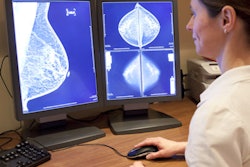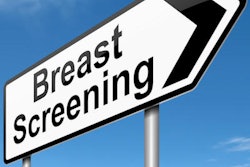
VIENNA - Double reading of digital breast tomosynthesis (DBT) plus digital mammography reduces the recall rate by 40% when compared with digital mammography alone, Italian researchers reported at ECR 2015.
"Breast tomosynthesis is one of the most promising techniques as an implementation of digital mammography, so some recent studies have suggested that there is a role for DBT in a mammographic screening program in order to reduce the recall rate," said Dr. Nicola Verardi from the radiology unit at IRCCS Policlinico San Donato in Italy. "This study is a way to estimate the recall rate induced by adding blinded double-reading DBT to standard digital mammography in a screening program."
Verardi and colleagues enrolled 280 women between the ages of 40 and 59 who were recalled at screening mammography. Two independent radiologists evaluated the digital mammography and digital mammography plus DBT exams. The radiologists were not aware of the final assessment, but they were aware of which side of the breast led to the recall.
After evaluating digital mammography images, they decided whether or not they would have recalled the patient. The radiologists then evaluated the same cases with digital mammography plus DBT to determine whether the patient would have been recalled if DBT were available, Verardi said.
Of the enrolled women, 107 (38%) were biopsied, and there were 41 malignant lesions.
| No. of patients who would not have been recalled | ||
| Digital mammography | Digital mammography + DBT | |
| Reader 1 | 79 | 86 |
| Reader 2 | 44 | 138 |
The difference between the readers was significant for digital mammography but not significant for the combination of digital mammography plus DBT.
| Diagnostic performance of digital mammo + DBT | |||||
| Sensitivity | Specificity | Accuracy | PPV | NPV | |
| Reader 1 | 93% | 67% | 71% | 33% | 98% |
| Reader 2 | 88% | 73% | 75% | 36% | 97% |
For both readers combined, sensitivity was 98%, specificity was 55%, accuracy was 61%, PPV was 27%, and NPV was 99%. The only false negative was an invasive ductal carcinoma, according to Verardi.
The results show that double reading of DBT along with digital mammography reduced the recall rate by 43%.
There are, however, some limits. This is a preliminary study, Verardi said, and the population was preselected (DBT was used as a workup and not as a screening tool). Also, there was a higher percentage of cancers compared with the screening population, and all cases did not have long-term follow-up.



















